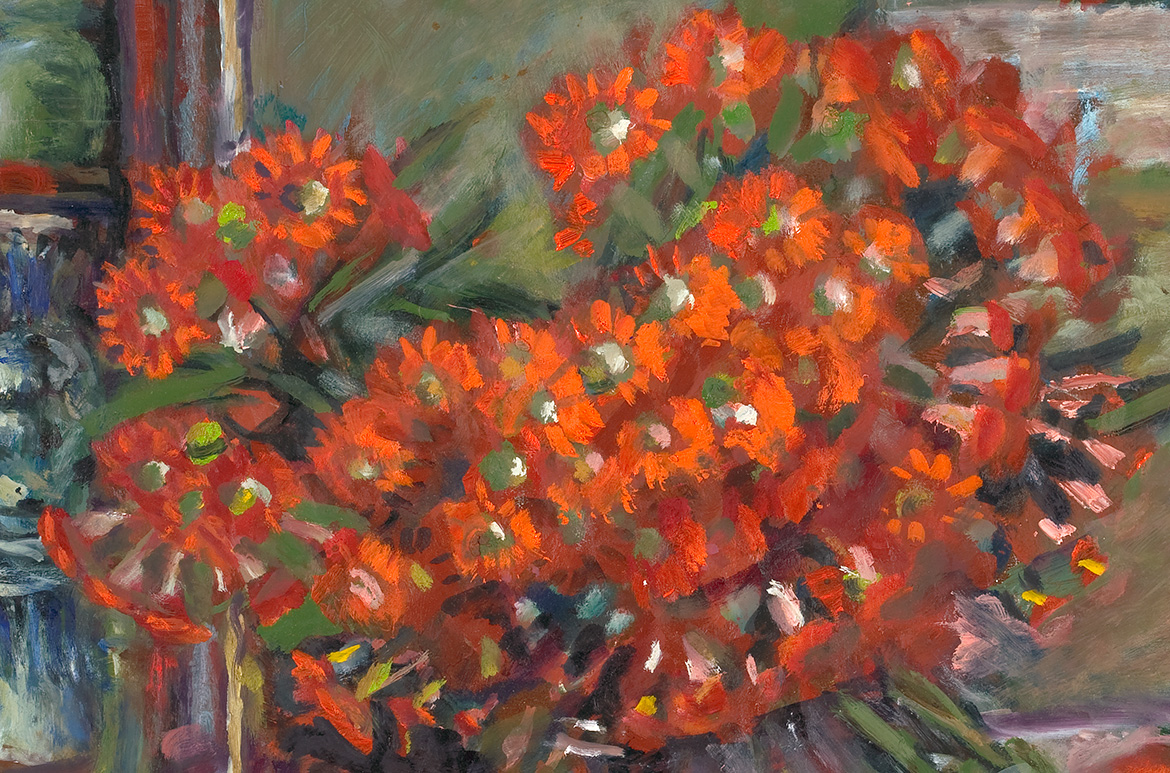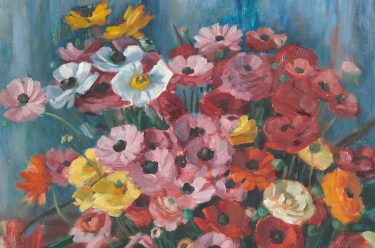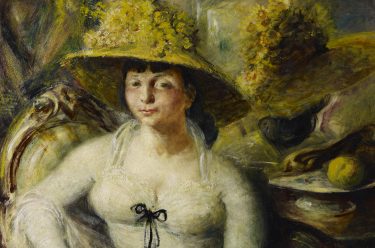Painting flowers had long been considered a feminine subject. With the examples of Marian Ellis Rowan (1848–1922) and Margaret Preston (1875 1963) behind her, Margaret Olley (1923–2011) can be seen as part of the continuing tradition. But she was more than that. Still life and interior painting were significant genres during the 1930s for both male and female painters and despite the impact of abstraction in its various manifestations after World War 2, Olley single-handedly sustained this tradition through the remainder of the 20th century.
Marian Ellis Rowan
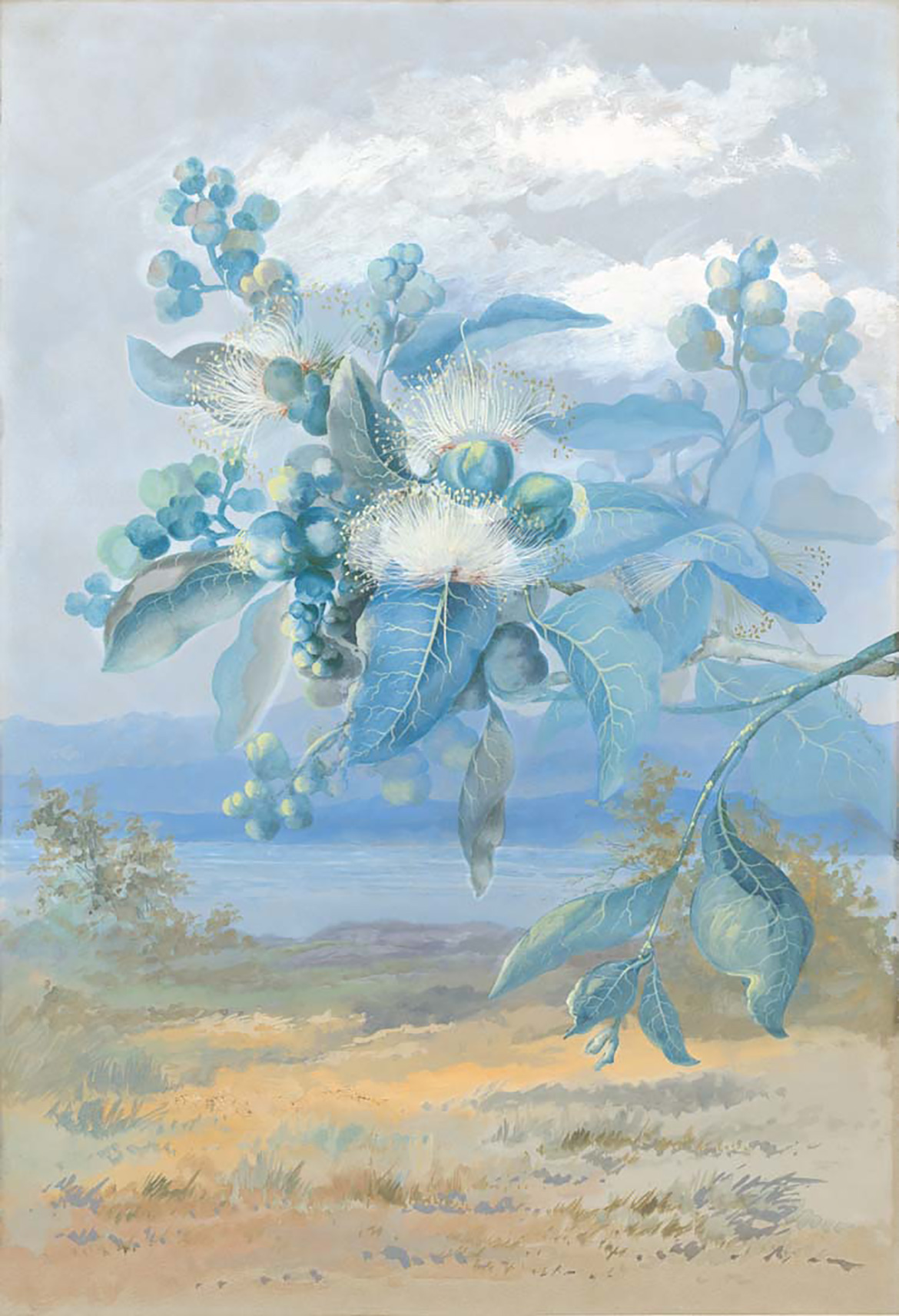
Margaret Preston

Margaret Olley
Australian native flowers were a prominent feature in the output of both Ellis Rowan at the turn of the 20th century and Margaret Preston during the 1930s but in the hands of Preston the sculptural form of Australian natives took on a distinctly modernist character. Olley was aware of native flora. She incorporated small dried arrangements in Portrait in the mirror 1948 but it was not until the early 1970s that Australian wildflowers began to be included in her repertoire ― and she always designated them wildflowers, not native flowers.
DELVE DEEPER: Garden Flowers
RELATED: Margaret Olley
Portrait in the mirror
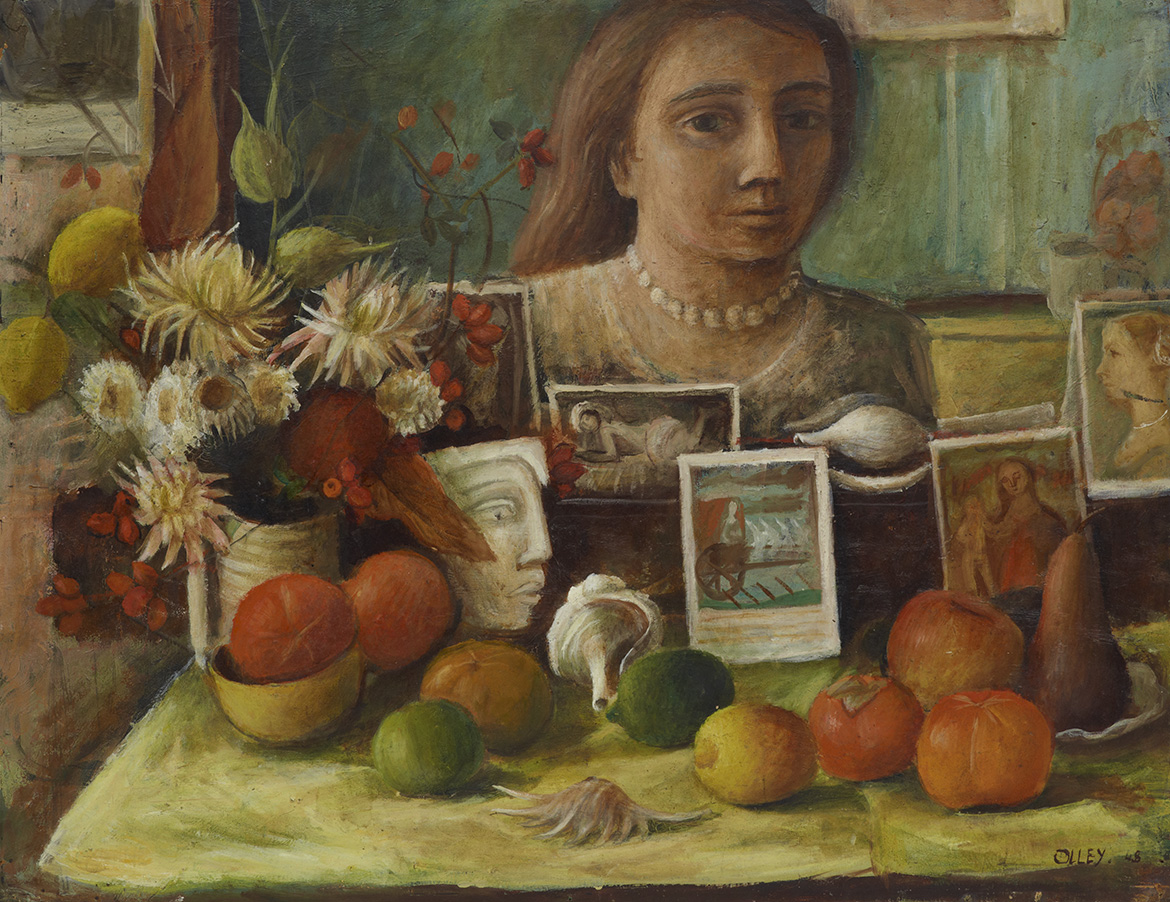
Her first identified painting of wildflowers in the Johnstone Gallery exhibition of 1970 depicted wildflowers from the wallum country on southern Queensland’s Sunshine Coast. She was probably aware of the activities of Kathleen McArthur who had been promoting the preservation of the region’s floristically-rich coastal heath and swamps. The exhibition also included two paintings entitled Hawkesbury wildflowers which were probably gathered by Olley on excursions outside the city. By this time and following the success of her exhibition at the Von Bertouch Gallery, Newcastle, in 1969, Olley brought a pair of timber houses there.
Hawkesbury wildflowers and pears
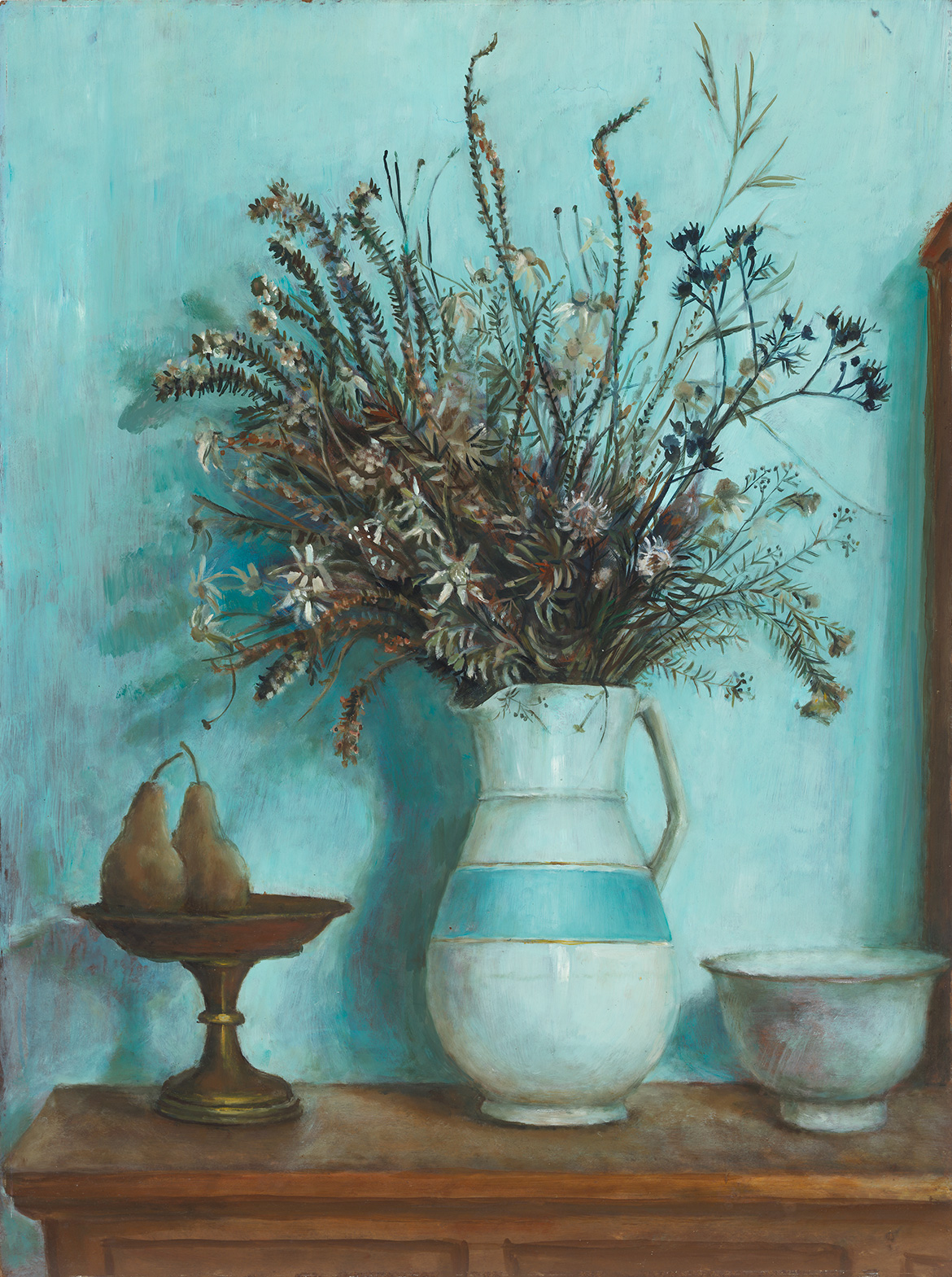
The interiors of David Strachan’s home in Sydney’s Paddington became a major focus of her ‘Homage’ exhibition at the Johnstone Gallery in 1972. Strachan had died in a car accident at Yass on 23 November 1970 and Olley, who lived nearby, gained permission to use Strachan’s house as her studio. A significant series of Hawkesbury wildflowers (largely sere and desiccated) with other still-life elements was painted there.
At David Strachan’s house
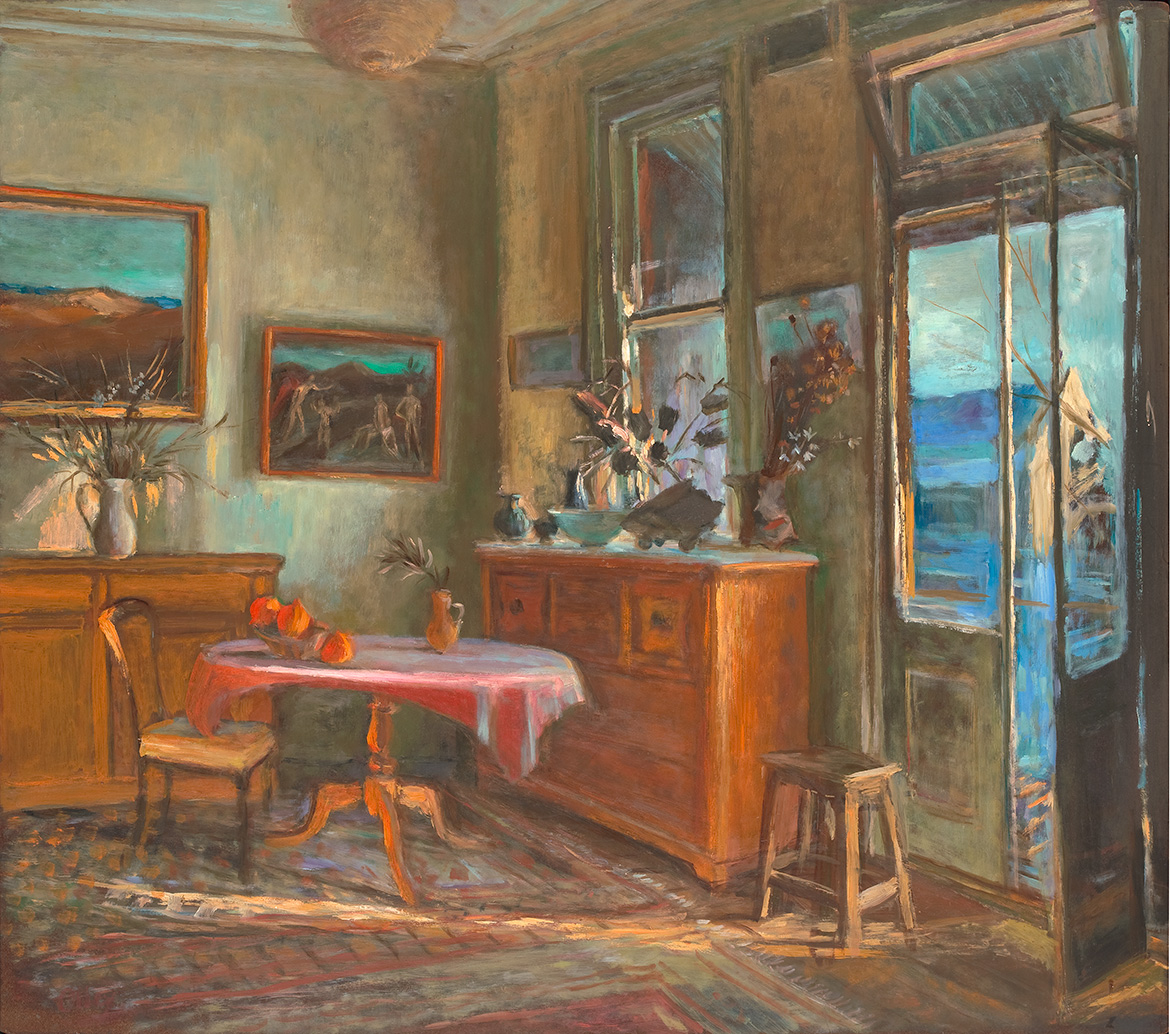
In succeeding years Olley exhibited wildflower paintings sporadically when she either visited or was presented with bouquets from locations around Sydney, as titles of her paintings identify: Mt White 1976; Little Hartley 1976; Gosford 1979; Mt White 1982; Palm Beach 1989; French’s Forest and Pittwater 1990 and Catherine Hill 1991. During this time freshly gathered Hawkesbury wildflowers also made their appearance.
White still life II
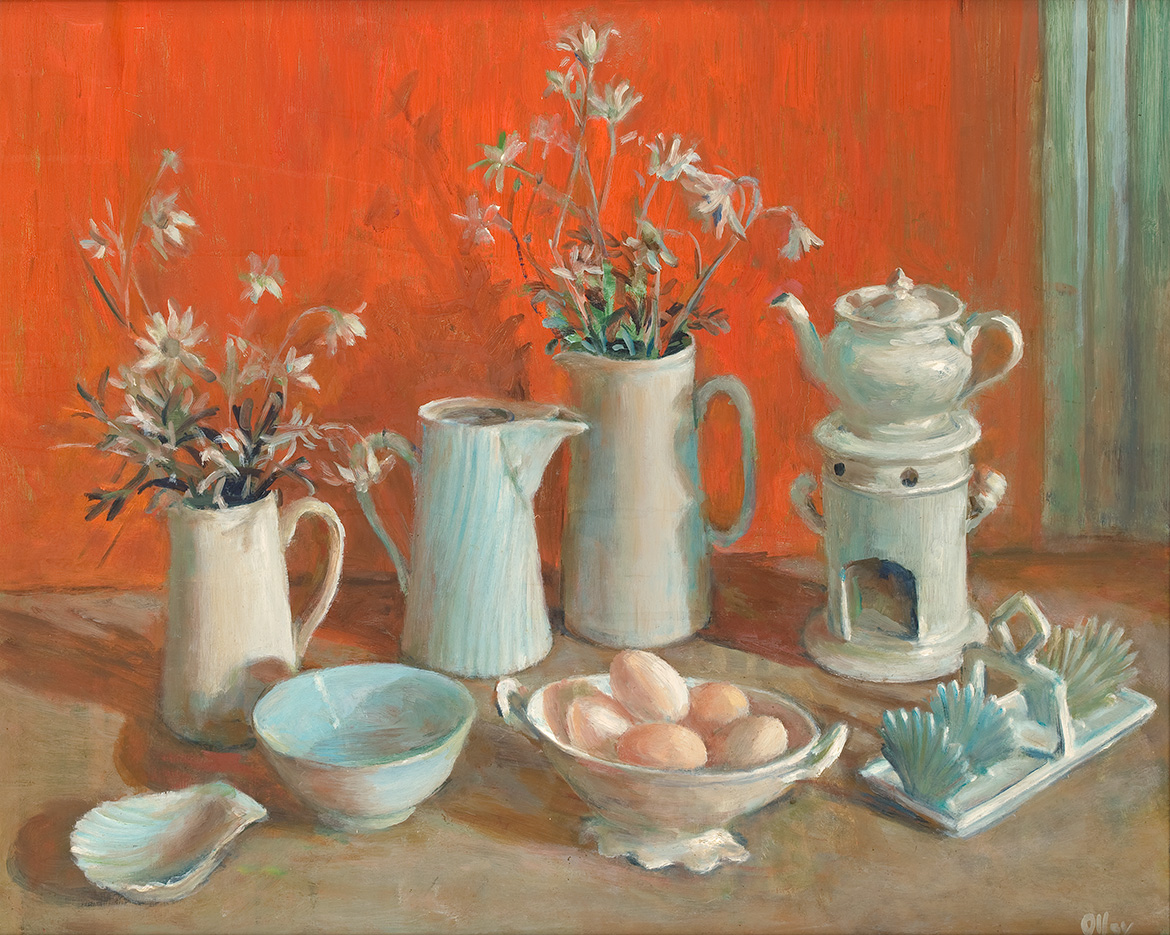
Flannel flowers (Actinotus helianthi), a common species of flowering plant which are native to the bushland surrounding Sydney, were her favourite wildflower. White still life II depicts three white jugs, two of which contain flannel flowers. Apart from making flannel flowers the focus in several works, they featured prominently in groupings with other wildflowers. Red bottle-brushes and dried everlasting daisies appear in several self portraits and also as independent paintings.
Banksia I
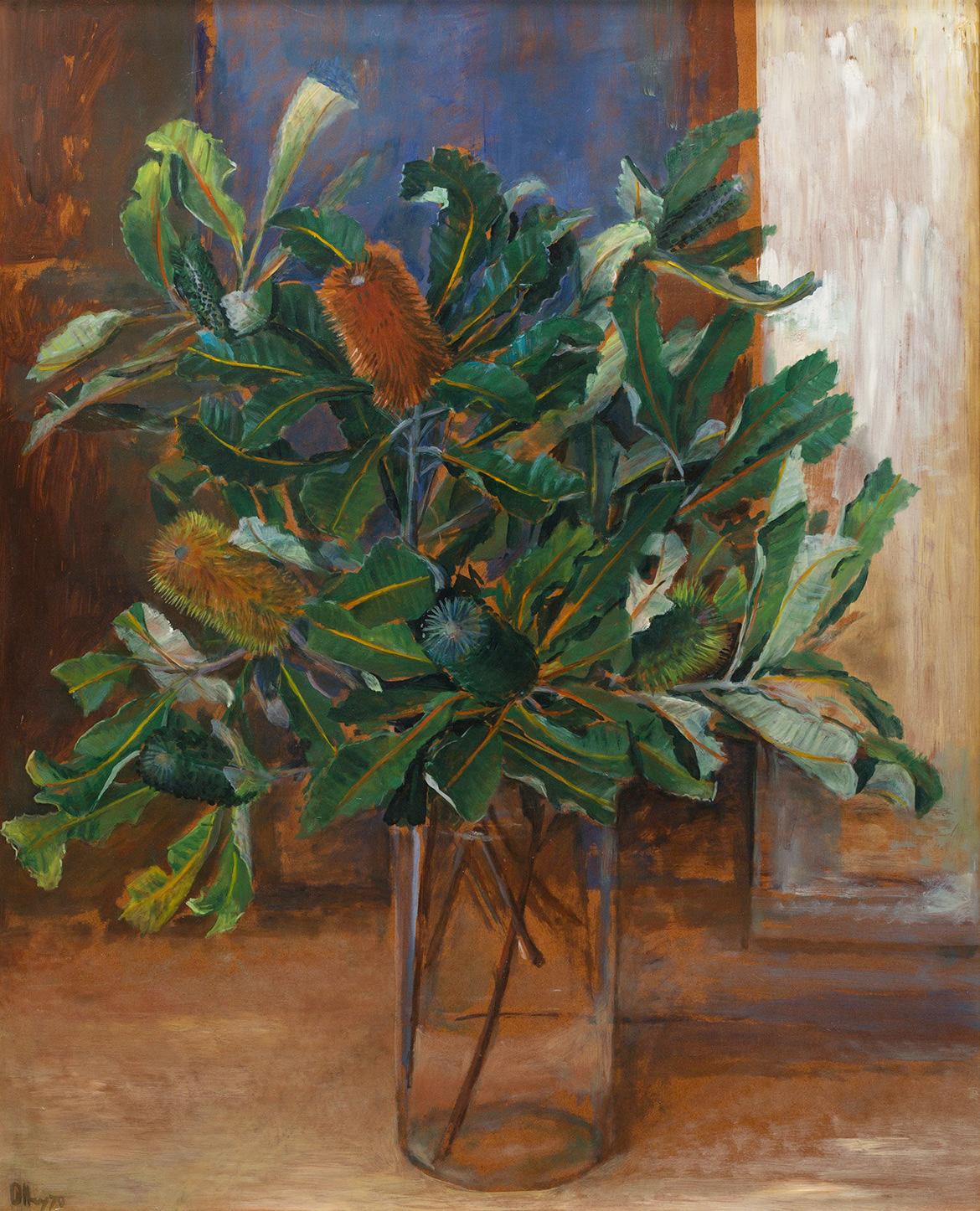
Gum blossoms
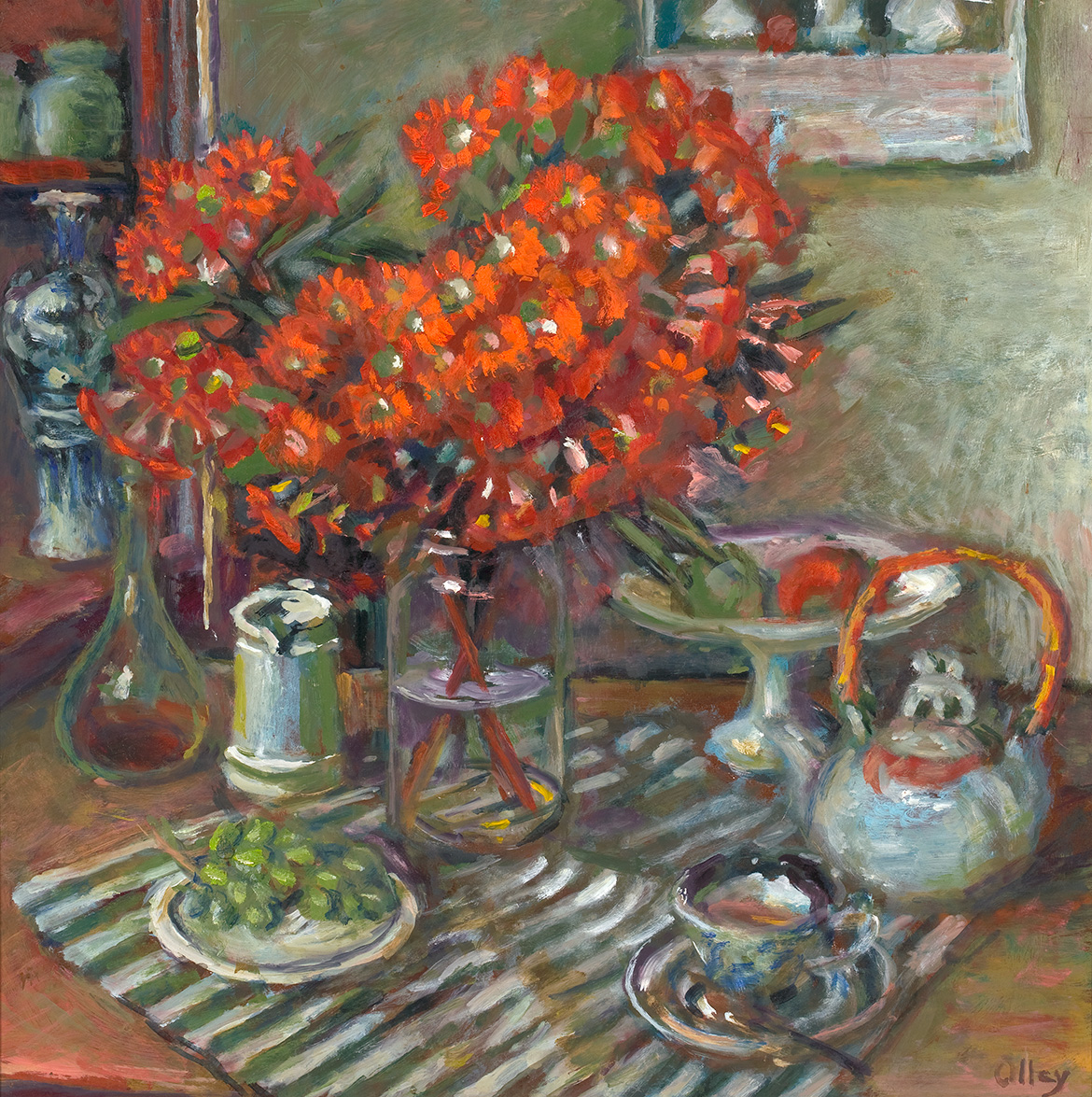
Olley’s appreciation of the sculptural forms of flowers such of the golden chalices of the solandra and the open white blossoms of the magnolias that attracted her in the 1960s reasserted itself in her depiction of the native Banksia in 1970. Over the years, however, its South African cousin the protea appears in even more paintings because of its successful development in the cut-flower market.
Edited extract: Cooke, Glenn R., ‘Margaret Olley: the subject is flowers’ in Australian Garden History, Melbourne, July 2019, pps 5-9
Art and social historian Glenn R Cooke was a curator at the Queensland Art Gallery for 32 years. He is a frequent contributor to Australia Garden History and is producing the Olley Project, an illustrated database of Olley’s oeuvre. The project is sponsored by the Margaret Olley Art Trust.
Know Brisbane through the QAGOMA Collection / Delve into our Queensland Stories / Read more about Australian Art / Subscribe to QAGOMA YouTube to go behind-the-scenes
‘A Generous Life’ at the Gallery of Modern Art (GOMA) 15 June – 13 October 2019 examined the legacy and influence of much-loved Australian artist Margaret Olley, who spent a formative part of her career in Brisbane. A charismatic character, whose life was immersed in art, she exerted a lasting impact on many artists as a mentor, friend and muse.
Featured image detail: Margaret Olley Gum blossoms 2007
#MargaretOlley #QAGOMA
